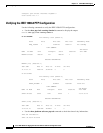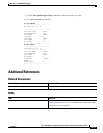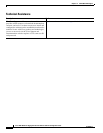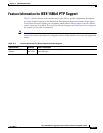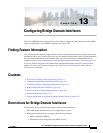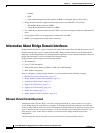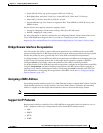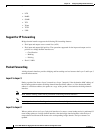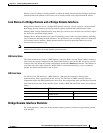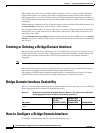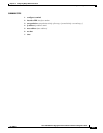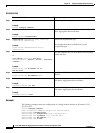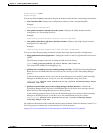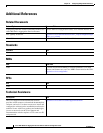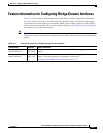
13-4
Cisco ASR 1000 Series Aggregation Services Routers Software Configuration Guide
OL-16506-17
Chapter 13 Configuring Bridge Domain Interfaces
Information About Bridge Domain Interfaces
• NTP
• RARP
• SNMP
• TCP
• Telnet
• TFTP
• UDP
Support for IP Forwarding
Bridge domain interface supports the following IP forwarding features:
• IPv4 input and output access control lists (ACL)
• IPv4 input and output QoS policies. The operations supported for the input and output service
policies on a bridge domain interface are:
–
Classification
–
Marking
–
Policing
• IPv4 L3 VRFs
Packet Forwarding
A bridge domain interface provides bridging and forwarding services between the Layer 2 and Layer 3
network infrastructure.
Layer 2 to Layer 3
During a packet flow from a Layer 2 network to a Layer 3 network, if the destination MAC address of
the incoming packet matches the bridge domain interface MAC address, or if the destination MAC
address is a multicast address, the packet or a copy of the packet is forwarded to the bridge domain
interface.
Note MAC address learning cannot not be performed on the bridge domain interface.
Note In a bridge domain, when flooding unknown unicast frames, bridge domain interface is not included.
Layer 3 to Layer 2
When a packet arrives at a Layer 3 physical interface of a router, a route lookup action is performed. If
route lookup points to a bridge domain interface, then the bridge domain interface adds the layer 2
encapsulation and forwards the frame to the corresponding bridge domain. The byte counters are
updated.



